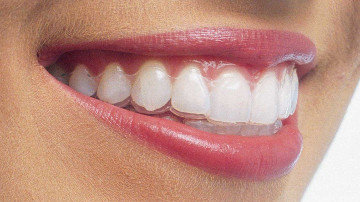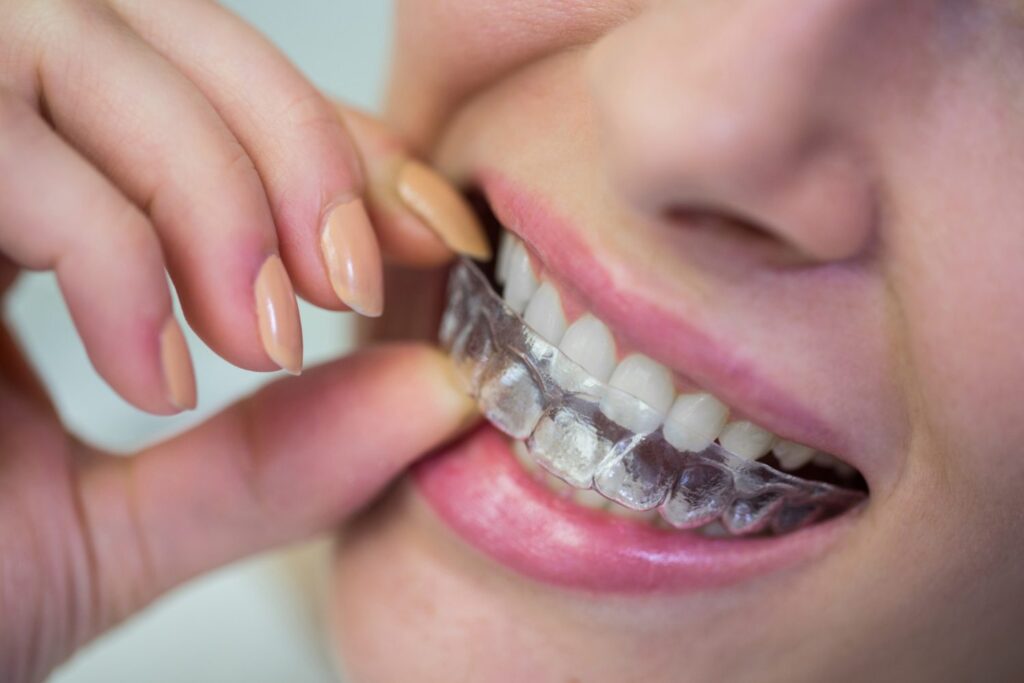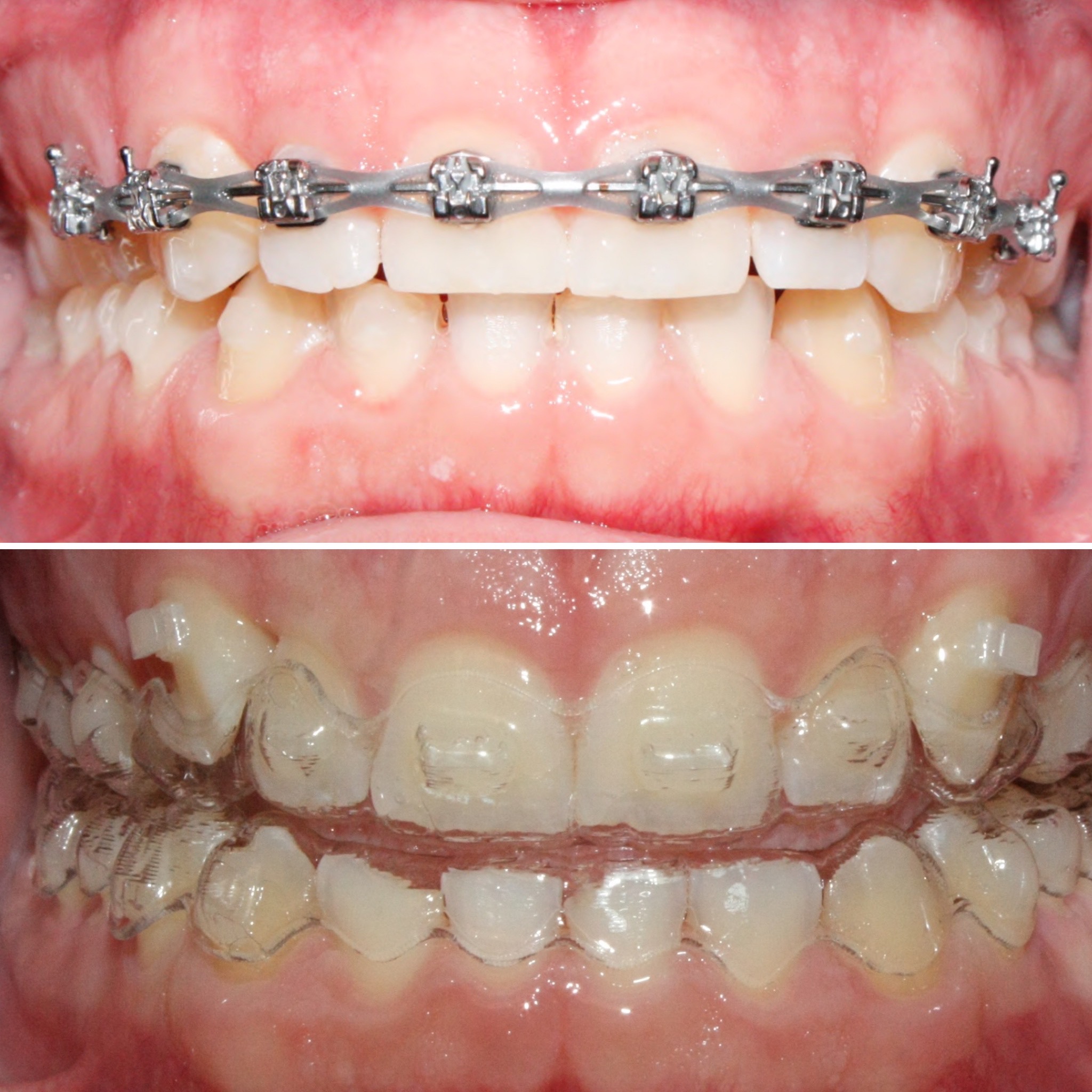How Invisalign Works: Your Overview to Clear Aligners and Their Effectiveness
How Invisalign Works: Your Overview to Clear Aligners and Their Effectiveness
Blog Article
Invisalign vs. Traditional Dental braces: Which Option Is Right for You?
When taking into consideration orthodontic therapy, the option between Invisalign and standard dental braces offers numerous essential variables that warrant mindful examination. Invisalign supplies a very discreet alternative with detachable aligners, while typical dental braces provide a more visible yet efficient solution for severe misalignment. Each choice incorporates distinct advantages and disadvantages connected to aesthetics, comfort, therapy period, and price. Understanding these nuances is essential for making a notified decision that aligns with your personal choices and way of living. The inquiry remains: which alternative will ideal satisfy your orthodontic requirements and expectations?
Review of Therapy Choices

On the other hand, standard dental braces include steel braces and wires that are bound to the teeth. This approach applies constant pressure gradually to attain alignment. While efficient for intricate orthodontic issues, standard braces call for regular sees for adjustments and can position difficulties in keeping oral health as a result of the trouble of cleaning around brackets and cables.
Both options have their qualities, and the choice frequently depends upon certain dental problems, way of living choices, and person conformity. Ultimately, speaking with an orthodontic expert is crucial for determining the most suitable treatment plan customized to specific needs. Comprehending the nuances of each choice can considerably influence the overall success of orthodontic treatment.
Visual Factors To Consider
A considerable factor affecting the option between Invisalign and typical braces is the visual charm each treatment supplies. Invisalign aligners are crafted from clear plastic, making them practically unnoticeable when worn.
On the other hand, standard braces are composed of metal braces and wires, which can be extra obvious. While advancements in orthodontic technology have actually brought about the growth of smaller brackets and tinted elastics, standard braces still maintain an even more obvious profile. For some individuals, the visibility of braces might discourage them from seeking required treatment.
Ultimately, the option between Invisalign and typical braces may depend upon individual preferences regarding aesthetics. Patients that prioritize discernment typically lean toward Invisalign, while those that are less worried about exposure might decide for conventional braces. Recognizing the aesthetic implications of each option is crucial for making a notified decision that aligns with one's lifestyle and preferences.
Comfort and Convenience

In regards to ease, Invisalign aligners are removable, enabling patients to appreciate their favored foods without constraint and preserve ideal oral health. Brushing and flossing are streamlined, as the aligners can be taken out throughout these routines, whereas standard dental braces require careful steering around wires and brackets.
In comparison, standard braces necessitate routine changes, making them less practical for those with active schedules. Generally, the comfort and convenience of Invisalign make Visit This Link it an enticing selection for several people looking for orthodontic therapy.
Therapy Period and Performance
While both Invisalign and standard braces work in fixing oral imbalances, the period of therapy can differ significantly between the two choices. Normally, Invisalign therapy can take anywhere from 12 to 18 months, relying on the intricacy of the case. The clear aligners function by slowly moving teeth into their preferred positions, and regular follow-ups with an orthodontist aid make certain development stays on the right track.
On the other hand, conventional braces usually need a longer dedication, generally varying from 18 months to three years. This is because of their set nature and the use of wires and brackets, which can be extra effective for severe imbalances and complex situations (Invisalign). The treatment effectiveness of standard braces is well-documented, as they permit for accurate changes and better control over tooth motion
Inevitably, the option between Invisalign and traditional braces may pivot on both the anticipated treatment duration and the certain oral issues available. Consulting with an orthodontist is essential, as they can give tailored suggestions based on individual needs, making sure the picked technique aligns with desired timeframes and end results.
Expense Comparison and Insurance Coverage Choices
Expense plays a substantial role dig this in the decision-making procedure for individuals thinking about orthodontic treatment, whether selecting Invisalign or conventional braces. Typically, the cost of Invisalign ranges from $3,000 to $8,000, while standard dental braces generally set you back in between $2,000 and $6,000. Elements influencing these prices consist of the complexity of the situation, the duration of treatment, and geographical location.
Lots of dental insurance plans give partial protection for orthodontic therapies, yet the specifics can vary extensively. Generally, traditional braces may be more regularly covered by insurance plans contrasted to Invisalign, which some insurers classify as an aesthetic treatment.
In addition, numerous orthodontic practices provide versatile layaway plan, making both therapy options more obtainable. Patients ought to make inquiries about potential financing options and discount rates for in advance repayments. Assessing the total price, consisting of insurance benefits and layaway plan, is important for making an educated decision that straightens with both visual choices and budget plan factors to consider.

Verdict
In recap, the choice in between Invisalign and traditional dental braces pivots on several elements, including aesthetic click for more info choices, convenience, therapy duration, and expense. Invisalign offers a discreet, detachable option that helps with oral health and nutritional versatility, while standard dental braces might be preferable for intricate oral concerns and often come with a reduced rate factor. Eventually, assessment with an orthodontist is important to examine individual situations and determine one of the most suitable therapy choice for accomplishing optimal oral positioning.
When thinking about orthodontic therapy, the choice in between Invisalign and traditional braces provides several vital variables that warrant careful analysis.Contrasting Invisalign and traditional braces exposes distinct therapy alternatives for orthodontic improvement.While both Invisalign and traditional dental braces are reliable in correcting oral misalignments, the period of treatment can vary significantly in between the two alternatives.Expense plays a substantial duty in the decision-making procedure for people considering orthodontic treatment, whether deciding for Invisalign or traditional braces.In recap, the selection between Invisalign and standard dental braces hinges on multiple aspects, including aesthetic choices, convenience, treatment duration, and expense.
Report this page